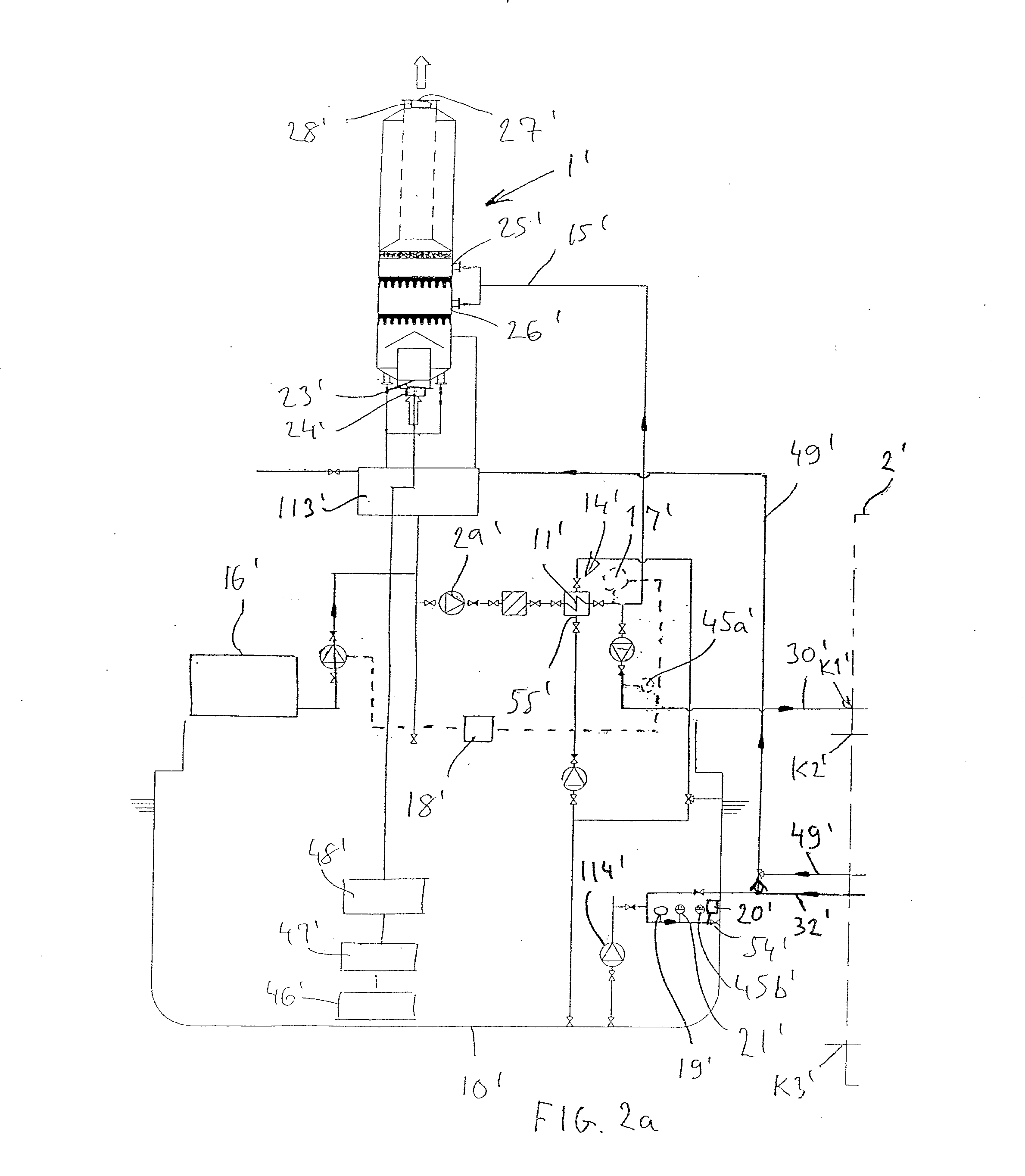Method for treating impurities contained in exhaust gases of ships, ship with exhaust gas scrubber, and purification unit
a technology for scrubbers and ships, applied in separation processes, membranes, separation processes, etc., can solve the problems of low ph value of wash water, high cost of low sulphur fuels, and discharge into the sea, and achieve the effect of convenient placement onboard a ship
- Summary
- Abstract
- Description
- Claims
- Application Information
AI Technical Summary
Benefits of technology
Problems solved by technology
Method used
Image
Examples
Embodiment Construction
[0034]FIG. 1 shows an exhaust gas scrubber 1 onboard a ship and a purification unit 2 connected thereto for purifying wash water exiting from the exhaust gas scrubber. Reference number 10 illustrates a ship. The ship's combustion engine is illustrated by reference number 46, a catalyser connected to the combustion engine 46 is designated by reference number 47, while reference number 48 designates an exhaust gas boiler. The combustion engine 46 is a diesel engine. The catalyser 47 reduces nitrogen oxide emissions. Preferably, the catalyser 47 uses urea for reducing the nitrogen oxide emissions. The structure and operation of the catalyser 47 are not discussed in this connection since they are known to those skilled in the art. The exhaust gases cool down in the exhaust gas boiler 48. At the same time as the exhaust gas boiler 48 cools down the exhaust gases, heat energy is recovered from the exhaust gases for the ship's various heating needs. The operation of the exhaust gas boiler ...
PUM
| Property | Measurement | Unit |
|---|---|---|
| Turbidity | aaaaa | aaaaa |
Abstract
Description
Claims
Application Information
 Login to View More
Login to View More - R&D
- Intellectual Property
- Life Sciences
- Materials
- Tech Scout
- Unparalleled Data Quality
- Higher Quality Content
- 60% Fewer Hallucinations
Browse by: Latest US Patents, China's latest patents, Technical Efficacy Thesaurus, Application Domain, Technology Topic, Popular Technical Reports.
© 2025 PatSnap. All rights reserved.Legal|Privacy policy|Modern Slavery Act Transparency Statement|Sitemap|About US| Contact US: help@patsnap.com



